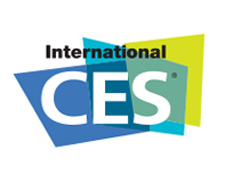It’s the time of year for saving money!
As you read this, it’s the first day of CES, also known as the Consumer Electronics Show in Las Vegas. But as I write this, it’s a few days before the show, and a lot of friends and colleagues are asking me what I expect to see. “Wearables and pet stuff,” I tell them, referring to the likely horde of new fitness bands and smartwatches and to the cool new Internet-powered doggie monitors for which I’ve been getting lots of press releases.
 What’s always most gratifying to me, though, is when the trends I hope will come to pass actually appear at CES. Here’s a few that I’ll be watching for.
What’s always most gratifying to me, though, is when the trends I hope will come to pass actually appear at CES. Here’s a few that I’ll be watching for.
More good all-in-one wireless speakers: Most wireless speakers cram a couple of full-range drivers and maybe a woofer into a single box; obviously, in these products, sound quality is a secondary concern, if that. But just before the show, Peachtree Audio demonstrated what can happen if a manufacturer builds a single-box system along the same acoustical principles they use to build a good stereo system. The result was a truly extraordinary product: the deepblue2, an all-in-one that could actually please audiophiles. I hope CES reveals a few other manufacturers who have the same idea.
More active speakers: More speaker manufacturers are starting to build amplifiers and audio processing into their products. While this trend — pioneered decades ago by Meridian and in numerous powered studio monitors — has never really caught on with audiophiles because it doesn’t let you choose your amp and preamp (and maybe not your DAC, either), the urge to add wireless capability is forcing speaker manufacturers to add electronics to their speakers. A great example is the Dynaudio XEO wireless speakers. The advantage to having amps and some amount of audio processing built in is that the crossovers can be done at line (preamp) level instead of with the big, power-sucking, amplifier-challenging capacitors and inductors found in a conventional passive crossover. Or better yet, they can be done in the digital domain, where more accurate and more extensive correction can be accomplished.
More Bluetooth: I’ve already seen previews of some very high-end (nearing $50,000) audio gear with Bluetooth built in. And why not? Sure, audio transmitted through Bluetooth doesn’t sound as good as audio transmitted without compression, or with lossless compression. But Bluetooth’s not the crime against art that some audiophiles make it out to be. It’s so easy and inexpensive to add that it seems silly not to — especially when so many people now stream their music through Internet radio, which is already data-reduced to begin with.
 More electronics with phono pres: Personally, almost all of my listening comes from computer-sourced files or from vinyl records, and it’s obvious I’m not alone. This is why we’re starting to see more audio gear that incorporates a phono stage. One great example: the Furutech ADL GT40a, a USB 24/192 ADC/DAC with a built-in headphone amp and MM/MC phono stage. The new $779 ADL Stratos (seen at right), which will debut at CES, ups the ante by adding a 32/192 ADC/DAC, DSD capability and an optical digital input. I hope we see more DACs and digital preamps with phono pres at CES.
More electronics with phono pres: Personally, almost all of my listening comes from computer-sourced files or from vinyl records, and it’s obvious I’m not alone. This is why we’re starting to see more audio gear that incorporates a phono stage. One great example: the Furutech ADL GT40a, a USB 24/192 ADC/DAC with a built-in headphone amp and MM/MC phono stage. The new $779 ADL Stratos (seen at right), which will debut at CES, ups the ante by adding a 32/192 ADC/DAC, DSD capability and an optical digital input. I hope we see more DACs and digital preamps with phono pres at CES.





